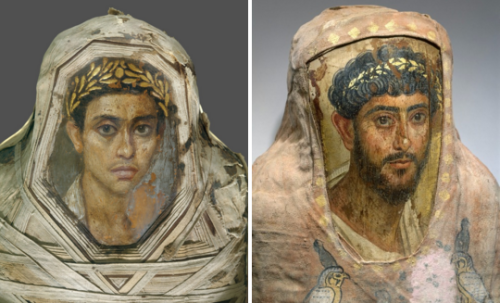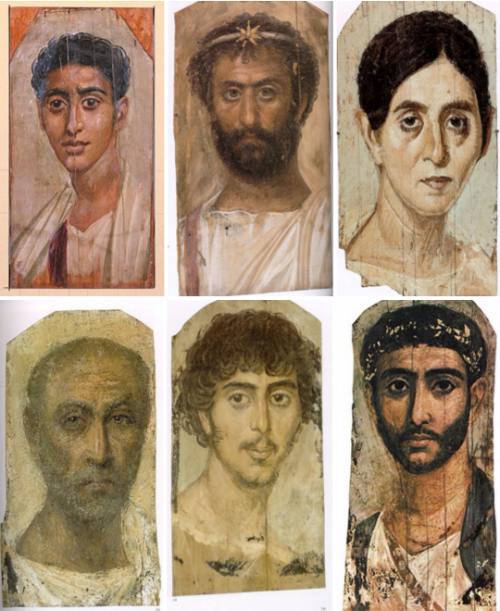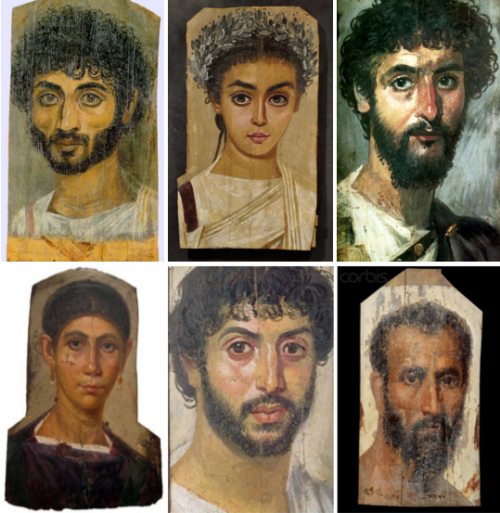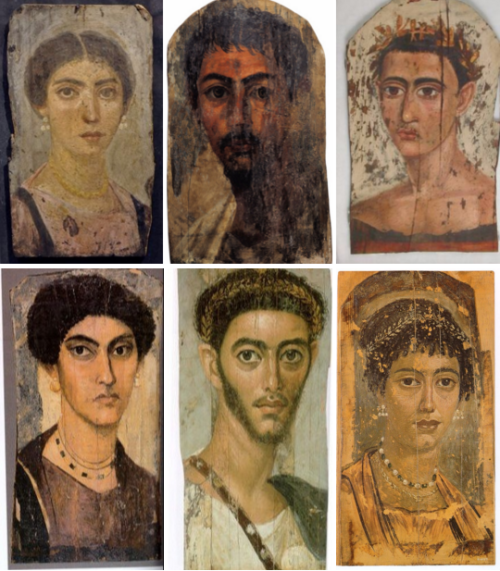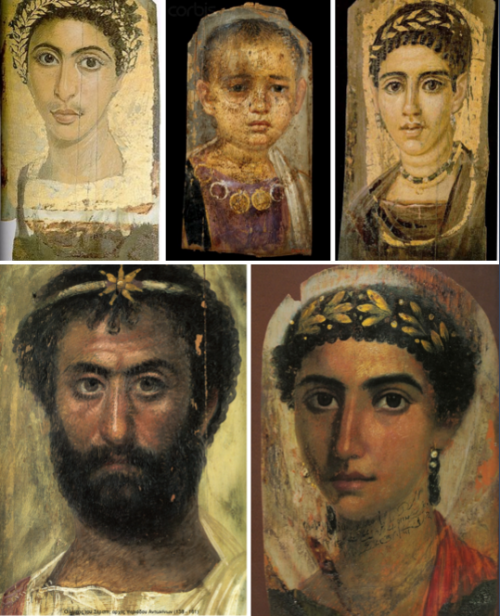theladyintweed:theladyintweed:Fayum Mummy Portraits, dating from around 30 BC to the mid 3rd century
theladyintweed:theladyintweed:Fayum Mummy Portraits, dating from around 30 BC to the mid 3rd century AD. The portrait heads were attached to Egyptian mummies of the Roman period, covering the faces of the deceased In the top pictures, you can see now they were bound to the mummy. Dating from the time of the Roman occupation of Egypt, they are closest to Graeco-Roman artistic traditions. Around 900 are known to survive and they are some of the only surviving evidence of Classical panel painting traditions. Due to their burial in hot, dry conditions with the bodies, many have survived in excellent condition. The term Fayum comes from an area of graveyards (necropoli) where they were found in large numbers, buried in communal catacombs. Painted on wooden board (and sometimes on cloth), either in encaustic (wax) or egg tempera. Top tip- when you’re looking at Fayum portraits, it’s generally immediately obvious whether they are painted in tempera or encaustic. The tempera portraits are more neat and precise, and generally the best ones are encaustic (although I feel the tempera really photographs a lot better- the encaustic ones look a bit messy in pictures but are stunning in real life). The encaustic portraits are far more powerful and lifelike, with a depth and transparency to the skin. I’ve never painted with encaustic before but I’m planning to learn this summer, largely because of these portraits! -- source link
